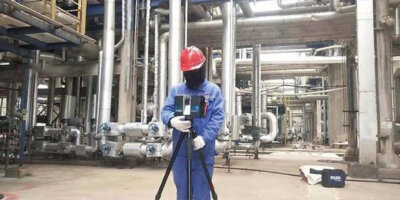In the intricate world of vaccine production, safety and purity are paramount. One crucial aspect often overlooked by the public is the management of potentially hazardous waste generated during the manufacturing process. Effluent decontamination systems play a vital role in ensuring that no harmful biological agents escape into the environment, protecting both public health and the integrity of vaccine production facilities.
The importance of effluent decontamination in vaccine production cannot be overstated. These systems are designed to neutralize and eliminate biological hazards from liquid waste before it's released from the facility. From inactivating live viruses to breaking down cellular debris, these systems act as the last line of defense against potential biosafety risks. As vaccine production scales up to meet global demands, particularly in light of recent pandemics, the need for robust and efficient effluent decontamination systems has never been more critical.
As we delve deeper into this topic, we'll explore the various types of effluent decontamination systems, their working principles, and the latest advancements in the field. We'll also discuss the regulatory landscape governing these systems and how they contribute to maintaining the highest standards of biosafety in vaccine production facilities worldwide.
Effluent decontamination systems are an essential component of vaccine production facilities, ensuring the safe treatment of biohazardous waste and preventing the release of potentially harmful agents into the environment.
| Aspect | Description |
|---|---|
| Primary Function | Neutralize and eliminate biological hazards from liquid waste |
| Key Benefits | Enhanced biosafety, environmental protection, regulatory compliance |
| Common Methods | Heat treatment, chemical disinfection, filtration |
| Challenges | Handling large volumes, maintaining efficacy, energy efficiency |
| Recent Advancements | Automated systems, real-time monitoring, sustainable technologies |
What are the core principles of effluent decontamination in vaccine production?
The foundation of effluent decontamination in vaccine production lies in a set of core principles designed to ensure the complete inactivation of potentially harmful biological agents. These principles guide the design, operation, and validation of decontamination systems, ensuring they meet the stringent requirements of biosafety regulations.
At its heart, effluent decontamination aims to render all biological waste harmless before it leaves the containment area. This involves a combination of physical, chemical, and sometimes biological processes that work together to break down or inactivate pathogens, cellular material, and other potentially hazardous substances.
The principles of effluent decontamination extend beyond mere treatment. They encompass a holistic approach that includes risk assessment, process validation, and continuous monitoring to ensure the system's efficacy and reliability.
The core principles of effluent decontamination in vaccine production include complete inactivation of biological agents, prevention of environmental contamination, and adherence to stringent biosafety standards throughout the treatment process.
| Principle | Description |
|---|---|
| Inactivation | Ensuring complete destruction of biological agents |
| Containment | Preventing release of untreated waste |
| Validation | Regular testing to confirm system efficacy |
| Monitoring | Continuous oversight of treatment processes |
| Redundancy | Backup systems to ensure uninterrupted operation |
How do different types of effluent decontamination systems work?
Effluent decontamination systems in vaccine production facilities come in various types, each employing different mechanisms to achieve the same goal: rendering biohazardous waste safe for disposal. Understanding these different systems is crucial for facility managers and biosafety officers to choose the most appropriate solution for their specific needs.
One of the most common types is the thermal decontamination system, which uses high temperatures to inactivate biological agents. This can be achieved through steam sterilization or dry heat treatment. Chemical decontamination systems, on the other hand, use powerful disinfectants to neutralize pathogens. These may include chlorine-based solutions, peracetic acid, or other oxidizing agents.
More advanced systems might incorporate multiple treatment stages, such as QUALIA's Effluent Decontamination System, which combines heat treatment with chemical disinfection for enhanced efficacy. Some facilities also employ filtration systems as an additional safeguard, especially when dealing with high-risk pathogens.
Effluent decontamination systems in vaccine production facilities typically employ a combination of thermal, chemical, and physical methods to ensure complete inactivation of biological hazards, with many modern systems utilizing multi-stage treatment processes for enhanced reliability.
| System Type | Treatment Method | Advantages | Challenges |
|---|---|---|---|
| Thermal | Steam or dry heat | Highly effective, leaves no residues | Energy-intensive |
| Chemical | Disinfectant solutions | Versatile, can treat large volumes | Chemical handling risks |
| Filtration | Membrane or depth filters | Effective for particulates, some viruses | May require frequent replacement |
| Combination | Multiple methods | Enhanced efficacy, redundancy | Complex operation, higher cost |
What role do automation and monitoring play in modern effluent decontamination systems?
In the era of Industry 4.0, automation and real-time monitoring have revolutionized effluent decontamination systems in vaccine production facilities. These technological advancements have not only improved the efficiency and reliability of the decontamination process but have also significantly enhanced biosafety measures.
Automated systems can precisely control treatment parameters such as temperature, pH, and chemical concentrations, ensuring consistent and optimal performance. Real-time monitoring allows operators to track the decontamination process continuously, providing instant alerts if any parameters deviate from the set ranges. This level of control and oversight is crucial in maintaining the integrity of the biosafety measures in place.
Moreover, these advanced systems often incorporate data logging and reporting features, which are invaluable for regulatory compliance and process optimization. By analyzing trends and patterns in the collected data, facilities can fine-tune their processes for improved efficiency and effectiveness.
Modern effluent decontamination systems in vaccine production facilities leverage automation and real-time monitoring to ensure precise control, continuous oversight, and comprehensive data analysis, significantly enhancing both operational efficiency and biosafety measures.
| Feature | Benefits | Implementation Challenges |
|---|---|---|
| Automated Control | Consistent performance, reduced human error | Initial setup complexity |
| Real-time Monitoring | Immediate issue detection, enhanced safety | Sensor calibration and maintenance |
| Data Logging | Regulatory compliance, trend analysis | Data storage and security concerns |
| Remote Access | Quick response to alerts, flexible management | Cybersecurity considerations |
How are effluent decontamination systems validated and certified?
Validation and certification of effluent decontamination systems are critical processes that ensure these systems perform as intended, effectively neutralizing biohazardous waste before it leaves the facility. This rigorous process involves a series of tests and evaluations designed to challenge the system under various conditions.
The validation process typically begins with a thorough risk assessment to identify potential failure points and determine the appropriate testing parameters. This is followed by installation qualification (IQ), operational qualification (OQ), and performance qualification (PQ) stages. During these stages, the system is tested under normal operating conditions as well as worst-case scenarios to ensure it can handle all potential situations.
Certification often involves third-party testing and may require demonstration of efficacy against specific indicator organisms. Regular revalidation is also necessary to ensure the system continues to perform optimally over time.
Validation and certification of effluent decontamination systems in vaccine production facilities involve comprehensive testing protocols, including challenge tests with indicator organisms, to ensure consistent performance and compliance with biosafety regulations.
| Validation Stage | Purpose | Key Activities |
|---|---|---|
| Risk Assessment | Identify potential hazards | Analyze process flow, identify critical points |
| Installation Qualification | Verify proper installation | Check equipment specifications, calibration |
| Operational Qualification | Confirm system functions | Test individual components, alarms |
| Performance Qualification | Assess overall efficacy | Challenge tests, worst-case scenario simulations |
What are the latest advancements in effluent decontamination technology?
The field of effluent decontamination is continuously evolving, with new technologies and methodologies emerging to meet the growing demands of vaccine production. These advancements aim to improve efficiency, reduce environmental impact, and enhance overall biosafety measures.
One significant development is the integration of sustainable technologies into decontamination systems. For instance, some facilities are now using UV-C light in combination with traditional methods to achieve more effective inactivation of pathogens while reducing chemical usage. Another area of innovation is in membrane technology, with advanced filtration systems capable of removing even the smallest viral particles from waste streams.
Artificial intelligence and machine learning are also making their way into effluent decontamination systems, enabling predictive maintenance and optimizing treatment processes based on historical data and real-time inputs.
Recent advancements in effluent decontamination technology for vaccine production include the integration of sustainable treatment methods, advanced filtration technologies, and AI-driven process optimization, all aimed at enhancing efficacy while reducing environmental impact.
| Technology | Application | Benefits |
|---|---|---|
| UV-C Treatment | Supplementary disinfection | Reduced chemical usage, effective against resistant pathogens |
| Advanced Membranes | Ultrafiltration and nanofiltration | Enhanced removal of small particles and viruses |
| AI and Machine Learning | Process optimization | Improved efficiency, predictive maintenance |
| Electrochemical Treatment | Chemical-free disinfection | Reduced environmental impact, on-site generation |
How do regulatory requirements shape effluent decontamination practices in vaccine production?
Regulatory requirements play a pivotal role in shaping effluent decontamination practices in vaccine production facilities. These regulations, set by agencies such as the FDA, EMA, and WHO, establish the standards that facilities must meet to ensure the safe handling and disposal of biohazardous waste.
One of the key aspects of these regulations is the concept of "validated inactivation." This requires facilities to demonstrate, through rigorous testing and documentation, that their decontamination processes effectively neutralize all potential biological hazards. Regulations also often specify the types of systems that can be used, the monitoring requirements, and the frequency of system validation.
Moreover, regulatory bodies are increasingly focusing on the environmental impact of decontamination processes, pushing for more sustainable practices. This has led to the development of new technologies and methodologies that not only meet biosafety standards but also minimize ecological footprints.
Regulatory requirements for effluent decontamination in vaccine production are comprehensive, mandating validated inactivation processes, stringent monitoring protocols, and increasingly, environmentally sustainable practices to ensure both biosafety and ecological responsibility.
| Regulatory Aspect | Requirement | Impact on Practices |
|---|---|---|
| Validated Inactivation | Demonstration of efficacy | Rigorous testing protocols |
| Monitoring | Continuous oversight | Implementation of advanced monitoring systems |
| Documentation | Detailed record-keeping | Comprehensive data management practices |
| Environmental Impact | Minimizing ecological footprint | Adoption of sustainable technologies |
What challenges do facilities face in implementing and maintaining effluent decontamination systems?
Implementing and maintaining effluent decontamination systems in vaccine production facilities presents a unique set of challenges. These range from technical complexities to operational and financial considerations, all of which must be carefully managed to ensure the system's effectiveness and compliance with regulatory standards.
One of the primary challenges is the need for continuous operation. Vaccine production often runs 24/7, and any downtime in the decontamination system can halt production, potentially leading to significant losses. This necessitates robust backup systems and preventive maintenance protocols.
Another challenge lies in handling the diverse types of waste generated during vaccine production. Different stages of production may produce waste with varying characteristics, requiring flexible and adaptable decontamination systems.
Cost is also a significant factor, with high-end decontamination systems representing a substantial investment. Facilities must balance the need for state-of-the-art technology with budgetary constraints while ensuring they meet all regulatory requirements.
Implementing and maintaining effluent decontamination systems in vaccine production facilities involves overcoming challenges related to continuous operation, diverse waste streams, and significant financial investments, all while ensuring strict compliance with evolving regulatory standards.
| Challenge | Impact | Potential Solutions |
|---|---|---|
| Continuous Operation | Risk of production halts | Redundant systems, predictive maintenance |
| Diverse Waste Streams | Need for flexible systems | Multi-stage treatment processes |
| High Costs | Budget constraints | Phased implementation, energy-efficient designs |
| Regulatory Compliance | Ongoing validation requirements | Regular training, proactive engagement with regulators |
How will effluent decontamination systems evolve to meet future vaccine production needs?
As vaccine production continues to advance and scale up to meet global health challenges, effluent decontamination systems must evolve in tandem. The future of these systems lies in their ability to adapt to new production methods, handle larger volumes of waste, and meet increasingly stringent environmental regulations.
One trend we're likely to see is the development of more modular and scalable systems. These will allow facilities to easily expand their decontamination capabilities as production increases, without the need for complete system overhauls. Additionally, we can expect to see greater integration of smart technologies, with AI-driven systems capable of self-optimization and predictive maintenance.
Sustainability will also be a key focus, with future systems likely to incorporate more energy-efficient processes and technologies that minimize chemical usage. There may also be a shift towards closed-loop systems that recycle treated water back into the production process, reducing overall water consumption.
The future of effluent decontamination systems in vaccine production will be characterized by modular designs, smart technologies, and sustainable practices, enabling facilities to adapt quickly to changing production needs while minimizing environmental impact.
| Future Trend | Expected Impact | Potential Challenges |
|---|---|---|
| Modular Systems | Easier scalability | Integration with existing infrastructure |
| AI-driven Optimization | Improved efficiency | Data security and system reliability |
| Sustainable Technologies | Reduced environmental impact | Initial implementation costs |
| Closed-loop Systems | Water conservation | Ensuring consistent water quality |
In conclusion, effluent decontamination systems are a critical component of safe and responsible vaccine production. As we've explored, these systems employ a range of technologies and methodologies to ensure that potentially hazardous waste is rendered harmless before leaving production facilities. The field continues to evolve, driven by advancements in technology, changing regulatory landscapes, and the ever-present need for improved efficiency and sustainability.
From the core principles that guide their design to the latest innovations shaping their future, effluent decontamination systems represent a fascinating intersection of biology, engineering, and environmental science. As vaccine production continues to play a crucial role in global health, the importance of these systems cannot be overstated.
Looking ahead, we can expect to see continued innovation in this field, with systems becoming more intelligent, adaptable, and environmentally friendly. These advancements will not only enhance biosafety measures but also contribute to more sustainable vaccine production practices overall.
As we face new global health challenges, the role of effluent decontamination systems in ensuring safe and efficient vaccine production will only grow in importance. By staying at the forefront of technological advancements and regulatory requirements, these systems will continue to play a vital role in protecting public health and the environment for years to come.
External Resources
BioSAFE Engineering – Alkaline Hydrolysis Effluent Decontamination Systems – Discusses the implementation of Africa's first alkaline hydrolysis effluent decontamination systems for enhanced biosafety in vaccine production.
Belgian Biosafety Server – Effluent Decontamination Systems – Provides detailed information on different types of effluent decontamination systems used in biocontainment facilities.
ABC Actini – Biowaste Decontamination Systems – Offers insights into high-quality critical processing systems for pharmaceutical and biotechnology industries, including biowaste treatment.
Getinge – Waste Treatment of Biohazardous Material – Explains the importance of safe handling and effective bio-decontamination in vaccine production.
ABC Actini – Delivery of a Decontamination Lab Container – Describes the fast-track delivery of a decontamination lab container to enhance vaccine production against COVID-19.
CDC – Biosafety in Microbiological and Biomedical Laboratories – Provides comprehensive guidance on biosafety practices, including waste management in laboratory settings.
- WHO – Laboratory Biosafety Manual – Offers global guidelines on biosafety practices, including effluent management in biomedical research and production facilities.
Related Contents:
- Safeguarding Vaccine Production: Advanced Effluent Decontamination Systems
- Safeguarding Health: Advanced Effluent Decontamination Systems
- Enhancing Safety in Vaccine Production: The Role of EDS
- Navigating Regulatory Waters: Effluent Treatment in Biopharma
- Effluent Segregation: Optimizing EDS Implementation
- Effluent Decontamination: Essential for High-Risk Labs
- Effluent Decontamination Systems: Safeguarding Malaysia’s Environment
- Continuous Effluent Decontamination: Protecting Our Environment
- Effluent Decontamination Systems for Biosafety Laboratories






























